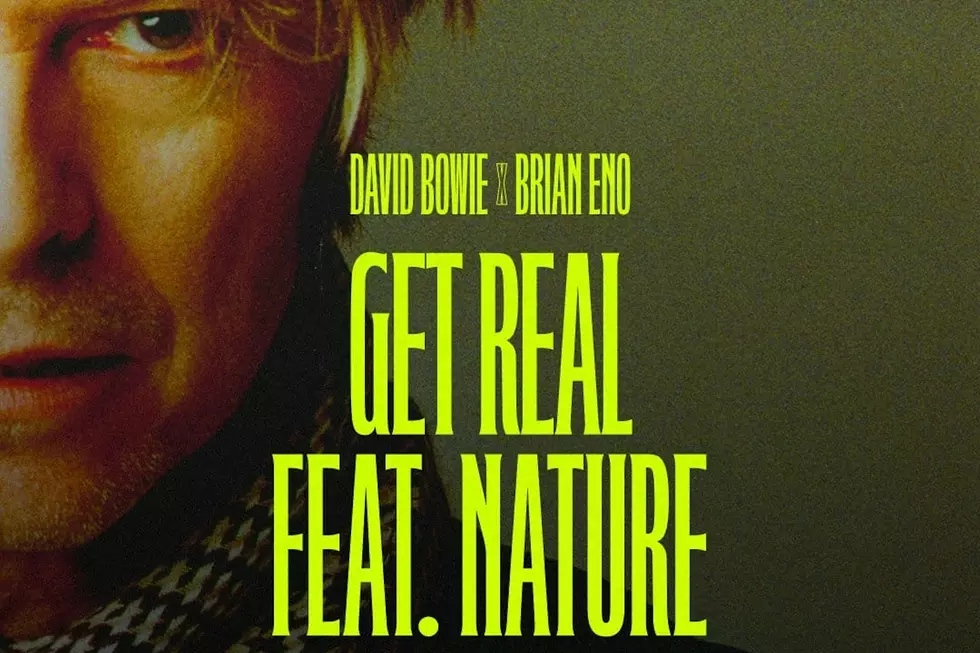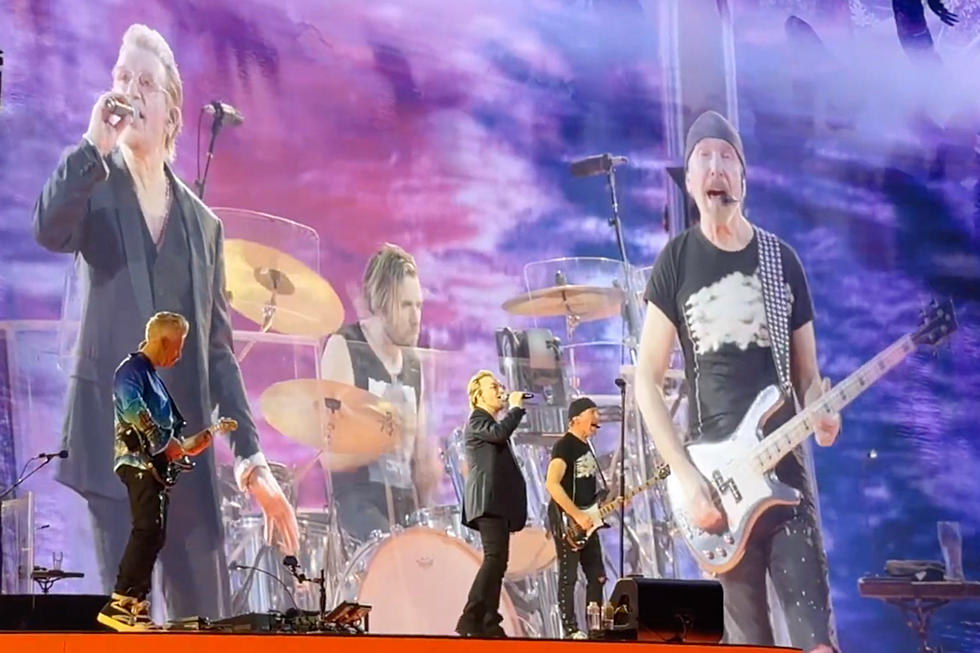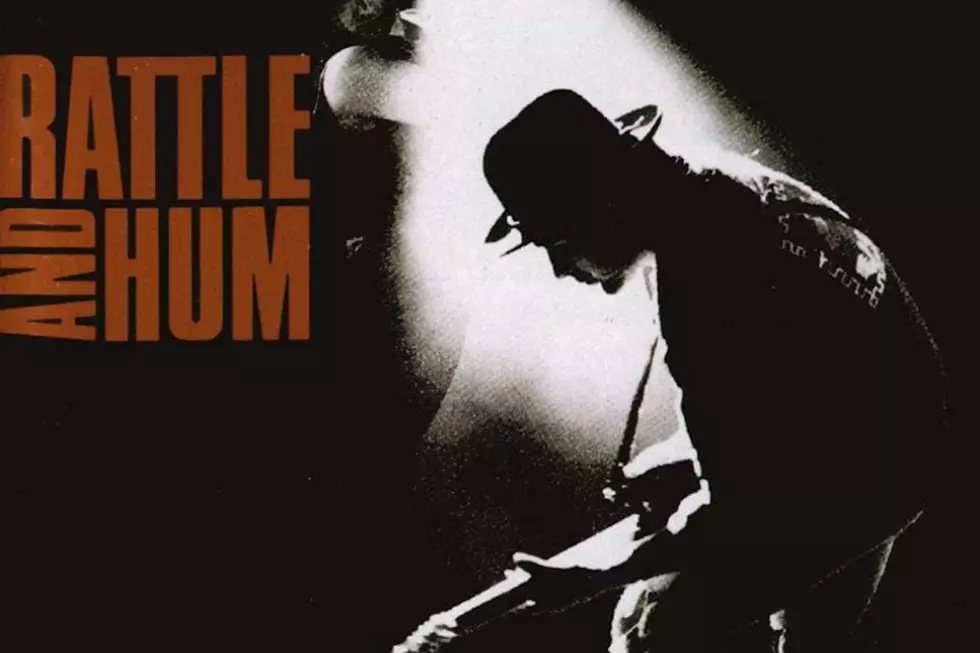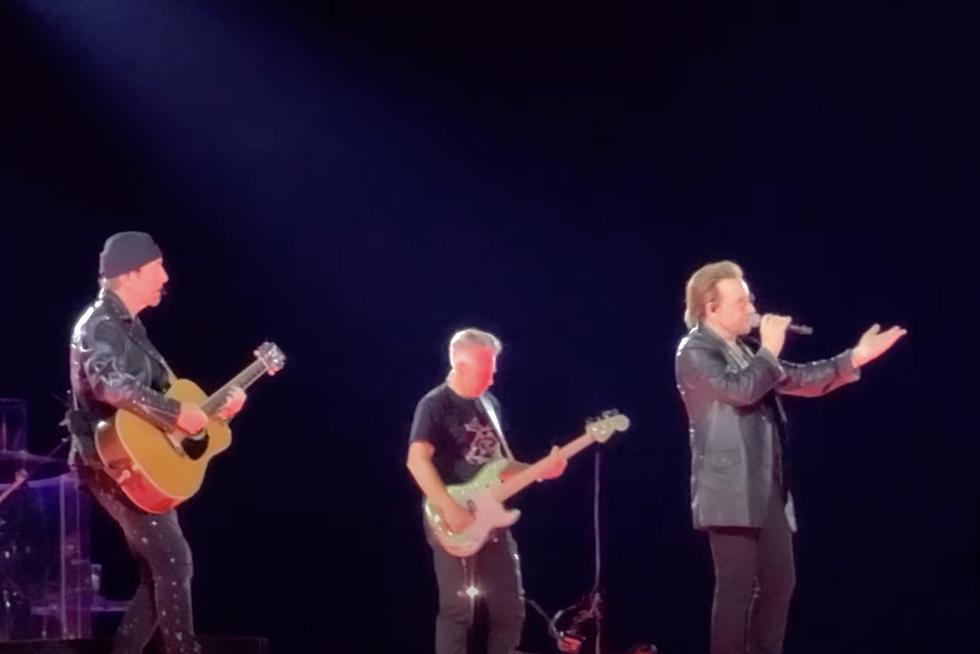
When U2 and Brian Eno Got Weird on Passengers’ ‘Original Soundtracks 1′
In the ’90s, U2’s entire modus operandi was ripping up the playbook and starting from scratch. Even for them, however, the 1995 album Original Soundtracks 1 was quite a detour.
First and foremost, the full-length wasn’t even technically a U2 album: It was released by the side project, Passengers, which featured the band and producer Brian Eno, who had worked with the band on previous records such as 1984's The Unforgettable Fire and 1987's The Joshua Tree.
“We wanted to do a project with Brian Eno that was not a U2 album, because we had been fans of his work for such a long time,” guitarist the Edge said at the time in an interview. “We went into the studio with Brian, really just to explore this idea of collaborating, songwriting, composing, whatever you want to call it together.” Added frontman Bono in that same interview, “the idea was to approach this record almost like a jazz record.”
As per usual, Eno set up some studio parameters and ambience – decorative curtains, pre-programmed sequences and rhythms, videotapes, and what Edge calls “strategies” – to encourage an atmosphere of improvisation.
"More and more of my energy goes into preparation, because then the act of actually making the music is relatively fast," Eno said in a 1995 interview. "This is in opposition to the way most people generally work: They're inside the music all the time. What I tried to do was think about what eventualities to expect. I needed to have things in reserve."
The guiding principle, however, was that the music created should be appropriate for (or inspired by) films, whether real or theoretical. In fact, the album’s liner notes feature descriptions of movies in which these songs appeared; however, most of these hilarious, over-the-top blurbs are works of fiction.
Listen to Passengers' 'United Colours'
Still, Original Soundtracks 1 did have some real-world cinematic inspiration. ''News footage from 1953. Animations from students at the Royal College of Art. Films from the Orient. Everything,” Eno said. “The idea was to have enough different types of things to suit whatever musical situation.''
The documentary Miss Sarajevo informed one song, while other tunes originated as potential music for a 1996 Peter Greenaway film called The Pillow Book. According to the U2 Pop Culture database, “The first sessions were great and the band, especially Bono and Edge, were thrilled with the co-operation. However, after several demos were completed, the film took a slightly different feel and Peter saw that it would not be appropriate to use the U2 songs written thus far.”
The resulting album, unsurprisingly, sounds nothing like U2 had ever released before. Abstract and textured, Original Soundtracks 1 is a pastiche of sonic vignettes and explorations: The drilling space-rock of “Always Forever Now,” the Laurie Anderson-esque avant garde number “A Different Kind of Blue,” the chilly ambient electro of “Ito Okashi.” The ominous, jazz-diffracted “One Minute Warning” even presages Trent Reznor’s future soundtrack work.
U2 couldn’t completely eschew their hit-making tendencies, however. “Your Blue Room,” which features starry-night organ, minimalist drums and Bono’s seductive-but-dangerous vocal delivery, is one of the band’s most underrated songs. And “Miss Sarajevo” remains one of U2’s finest moments, an empathetic political statement featuring swelling strings and a moving Luciano Pavarotti opera aria.
People weren’t quite sure what to make of the record, which is perhaps why it only peaked at No. 76 on the Billboard album chart. Not everyone in U2 was satisfied with the results, either: Drummer Larry Mullen in particular was a vocal dissenter. "It hasn't grown on me," he told Q in 2002. "However, 'Miss Sarajevo' is a classic. At the time I just thought, ‘Leave your audience alone, you've already given them Achtung Baby and Zooropa, give it a rest."
Still, even if Original Soundtracks 1 wasn’t a massive success, the band at least fulfilled what they wanted to achieve with it. “When you’re working on a U2 record, the center of it is of course the music itself,” Bono said at the time. “But when you’re working with the soundtracks, the center is the picture. It is an extraordinary thing that some soundtracks transcend that. We wanted to make very visual music. That was really it. It wasn’t about storytelling.”
U2 Albums Ranked
More From Ultimate Classic Rock









